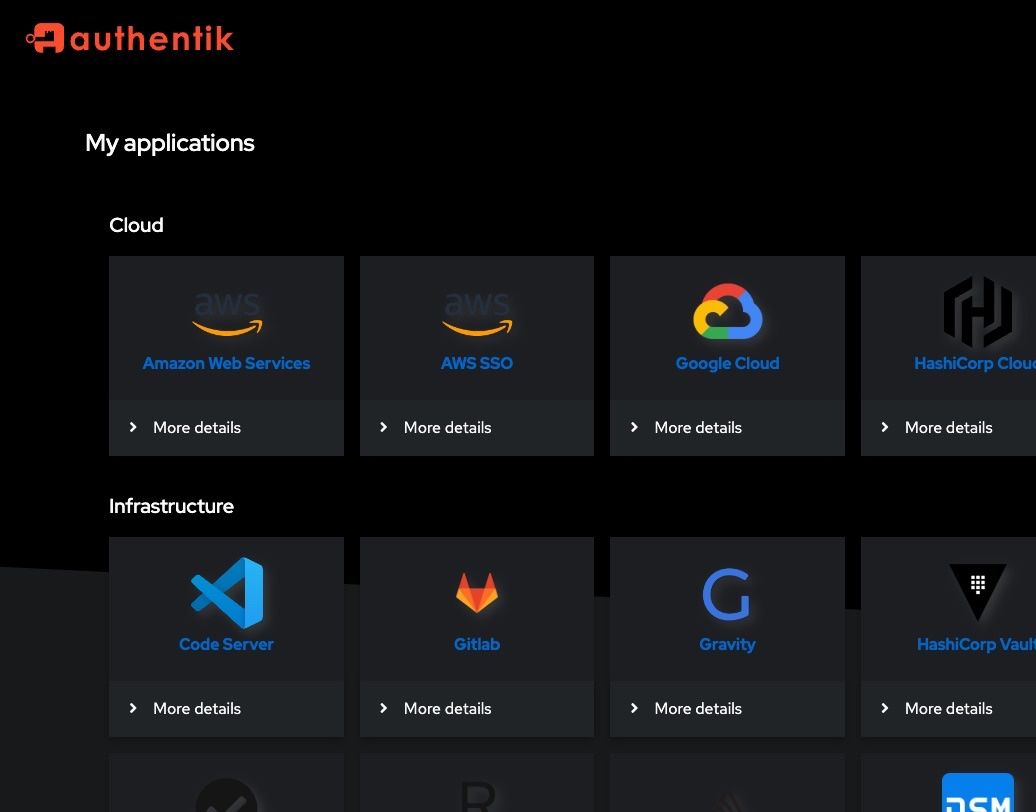
What is Authentik?
Struggling with complex authentication systems? Authentik is the open-source identity provider that’s all about simplicity and robust security. It’s built for seamless integration, offering flexible user access management across your infrastructure. Authentik doesn’t just work—it transforms how you manage identities, making it an essential tool for any modern tech stack.
Introduction
As cyber threats evolve and remote work becomes the norm (don’t attack me for saying this in 2024), traditional identity management solutions are struggling to keep up. Authentik steps in as a breath of fresh air, offering a flexible, scalable, and user-friendly approach to identity and access management (IAM). But what sets Authentik apart from the crowd? Let’s explore the seven key features that make it a true next-generation identity provider.
- Single Sign-On (SSO) Made Simple
Authentik’s Single Sign-On capability is a standout feature, allowing users to access multiple applications with just one set of credentials. This not only enhances user experience but also significantly reduces password fatigue and associated security risks.
Key Benefits:
- Streamlined user access across various platforms
- Reduced IT support tickets related to password resets
- Enhanced security through centralized authentication
- Multi-Factor Authentication (MFA) for Enhanced Security
In an era where passwords alone are no longer enough, Authentik offers robust MFA options. From time-based one-time passwords (TOTP) to WebAuthn support, Authentik ensures that your users’ identities are verified through multiple secure channels.
MFA options include:
- SMS and email-based verification
- Mobile authenticator apps
- Hardware security keys
- Flexible User Provisioning and Management
Authentik shines when it comes to user lifecycle management. Its powerful provisioning engine allows for automated user creation, modification, and deactivation across connected systems.
Standout features:
- Rule-based provisioning workflows
- Integration with HR systems for seamless onboarding
- Self-service user management portal
- Customizable Branding and User Interfaces
Unlike many identity providers that offer limited customization, Authentik allows you to tailor the look and feel of login pages, emails, and user interfaces to match your brand identity perfectly.
Customization options:
- Fully customizable CSS and templates
- Multi-language support
- White-labeling capabilities
- Comprehensive Audit Logging and Reporting
Security teams will appreciate Authentik’s detailed audit logs and reporting features. Every authentication attempt, user action, and system change is meticulously recorded, providing invaluable insights for compliance and security analysis.
Key features:
- Real-time event streaming
- Customizable dashboards and reports
- Integration with SIEM solutions
- API-First Architecture for Seamless Integration
Authentik’s API-first approach makes it a dream for developers looking to integrate identity management into their applications or automate IAM processes.
Benefits of API-first design:
- Easy integration with existing systems
- Automation of repetitive tasks
- Extensibility through custom plugins and scripts
- Open-Source Advantage: Community-Driven Innovation
As an open-source solution, Authentik benefits from a vibrant community of developers and security experts. This translates to rapid feature development, thorough security audits, and a wealth of community-contributed integrations and plugins.
Open-source benefits:
- Transparency and trust in the codebase
- Rapid bug fixes and feature enhancements
- Flexibility to modify the solution to fit specific needs
Authentik vs Keycloak
When comparing Authentik and Keycloak, two prominent identity providers, it’s essential to consider their features, resource requirements, and use cases. Keycloak, backed by Red Hat, has a well-established reputation and large user base, making it a trusted choice for long-term deployments. Authentik, though newer, has gained support from DigitalOcean, indicating its growing significance in the market.
Authentik offers a comprehensive feature set, including multi-tenancy and LDAP interface support, which can streamline infrastructure by eliminating the need for separate OpenLDAP setups. However, it’s important to note that Authentik is resource-intensive, requiring a minimum of 2GB RAM and 2 CPU cores. For users with lighter requirements, alternatives like Authelia, Zitadel, or Casdoor, written in Go, offer more efficient resource utilization.
Which one to use?
- Consider your specific use case and resource availability when choosing between Authentik and Keycloak.
- Evaluate the trade-off between Authentik’s feature-rich environment and its higher resource consumption.
- Explore lightweight alternatives for scenarios where extensive GUI usage is infrequent.
- Factor in long-term maintenance and integration with existing systems.
Conclusion
Authentik is more than just another identity provider; it’s a forward-thinking solution that addresses the complex identity management challenges of today’s digital world. With its powerful features, flexibility, and community-driven development, Authentik is positioned well to become the one stop management solution for organizations looking to secure their infrastructure.
Whether you’re a small startup or a large enterprise, Authentik offers the tools and capabilities to streamline your authentication processes, enhance security, and provide a seamless user experience. It could be a one stop solution to replace services like Okta, Azure Entra ID, Auth0, SAML, LDAP etc.




Anonymous
August 19, 2024 at 12:00 pmHow is this different from authelia?
Anshu
August 29, 2024 at 2:08 pmAuthentik can actually do what authelia can and much more, Authelia on the other hand is pretty straight forward. But definately as the OP says above. Authentik can be very resource heavy (for me it compensates that with a better GUI and more functionality).
It’s your choice in the end. I would say if you can bear this initial resource load go with Authentik as it can be a safer bet in the long term.
Chief Pashka was a man Let s hard contusion The feet
November 28, 2024 at 3:12 pmChief Pashka was a man Let s hard contusion The feet